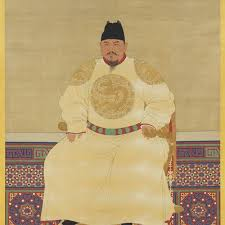The Ming Dynasty, spanning from 1368 to 1644, was an era of remarkable achievements in Chinese history. Among its many accomplishments, the Ming Dynasty’s maritime explorations stand out as a testament to the ingenuity, ambition, and navigational prowess of ancient China. This article delves into the fascinating world of Ming-era sea voyages, highlighting their impact on trade, diplomacy, and global history.
Setting Sail: The Beginning of Maritime Exploration
The Ming Dynasty emerged following the collapse of the Mongol-led Yuan Dynasty. With the founding emperor Zhu Yuanzhang prioritizing internal stability, it wasn’t until the reign of his son, Emperor Yongle, that maritime exploration became a significant focus. Yongle’s ambitious vision transformed China into a naval powerhouse.

The Role of Emperor Yongle
Emperor Yongle’s reign marked the golden age of Ming naval expeditions. Believing in the importance of showcasing China’s power and influence, he initiated a series of grand voyages to extend the empire’s reach and establish diplomatic ties.
Zheng He: The Admiral of the Treasure Fleet
Central to these explorations was Zheng He, a Muslim eunuch and trusted confidant of Emperor Yongle. Zheng He led seven major voyages between 1405 and 1433, commanding massive fleets that were unmatched in scale and sophistication.
The Treasure Fleet: Engineering Marvels of the Ming Era
The Ming treasure fleets were engineering marvels, comprising hundreds of ships of varying sizes and functions. The flagship vessels, known as treasure ships, were immense, measuring up to 120 meters in length. These ships were equipped with state of the art navigation tools and carried valuable cargo, including silk, porcelain, and spices.
Advanced Shipbuilding Techniques
Ming shipbuilders utilized advanced techniques, including watertight compartments and multiple masts, to enhance durability and maneuverability. These innovations set a benchmark in naval engineering.
Logistics and Crew
Each voyage involved meticulous planning, with fleets carrying thousands of sailors, soldiers, translators, and scholars. The crew’s diverse composition ensured efficient operation and successful cultural exchanges.
The Routes and Destinations
Ming maritime explorations ventured far beyond China’s shores, reaching as far as East Africa and the Arabian Peninsula. The expeditions followed established maritime routes, leveraging the monsoon winds to traverse vast distances.
Key Stops Along the Journey
- Southeast Asia: Ports in modern-day Vietnam, Thailand, and Indonesia were key stops for trade and diplomacy.
- Indian Subcontinent: Ming fleets visited ports like Calicut, fostering cultural and economic exchanges.
- East Africa: Expeditions reached as far as Kenya and Tanzania, introducing Chinese goods and technology.
Cultural and Economic Impact
The Ming voyages had a profound impact on global trade and cultural exchange. The fleets facilitated the flow of goods, ideas, and technologies between East and West, laying the groundwork for a more interconnected world.
Expansion of Trade Networks
Ming expeditions boosted trade by introducing Chinese goods to new markets. In return, China imported exotic items such as African ivory, Persian rugs, and Indian spices.
Diplomatic Achievements
Zheng He’s missions were not solely commercial; they also emphasized diplomacy. By presenting lavish gifts and establishing tributary relationships, the Ming Dynasty secured its position as a dominant global power.
Challenges and Decline
Despite their success, the Ming voyages faced challenges, including political opposition, resource constraints, and changing priorities.
Internal Opposition
Conservative officials viewed the voyages as extravagant and unnecessary. They advocated for redirecting resources to domestic concerns, leading to reduced support for maritime exploration.
Shift in Imperial Focus
Following Emperor Yongle’s death, subsequent rulers prioritized defense against northern invaders, resulting in the cessation of grand maritime expeditions.
Legacy of the Ming Maritime Explorations
Although the Ming Dynasty’s maritime endeavors were short-lived, their legacy endures. These voyages demonstrated China’s naval capabilities and contributed to a rich era of cultural and economic exchange.
Influence on Global History
The Ming expeditions highlighted the interconnectedness of the ancient world, influencing trade and diplomacy on a global scale.
Inspiration for Future Generations
Zheng He’s achievements continue to inspire modern China’s interest in maritime exploration and international cooperation.
Conclusion
The Ming Dynasty’s maritime exploration was a remarkable chapter in history, showcasing the ambition and innovation of an era. These grand voyages left an indelible mark on the world, fostering connections that transcended borders and time. As we reflect on this golden age of exploration, we are reminded of the enduring power of curiosity and the pursuit of discovery.
FAQs
1. Why did the Ming Dynasty prioritize maritime exploration?
The Ming Dynasty prioritized maritime exploration to showcase its power, establish diplomatic ties, and expand trade networks under Emperor Yongle’s leadership.
2. Who was Zheng He?
Zheng He was a Muslim eunuch and admiral who led the Ming Dynasty’s treasure fleets on seven major voyages, facilitating trade and diplomacy.
3. What were the key destinations of the Ming treasure fleets?
The treasure fleets visited Southeast Asia, the Indian subcontinent, and East Africa, among other regions.
4. Why did the Ming voyages come to an end?
The voyages ended due to political opposition, resource constraints, and a shift in focus towards defending against northern invaders.
5. What is the legacy of the Ming Dynasty’s maritime exploration?
The legacy includes advancements in naval engineering, expanded trade networks, and a lasting influence on global history and cultural exchange.


